Located in the quiet, slow-living Minsheng Community (民生社區), near the tree-lined Fujin Street (富錦街), Monsieur L Restaurant has the look of a nice, quaint neighborhood eatery and the substance of a multicourse feast. Though the food on offer is hit-and-miss, the restaurant is a pleasant spot to take in the unhurried ambiance of the charming neighborhood, while enjoying an elaborate meal and professional service usually found at a much fancier establishment.
Painted terracotta red and furnished with a wooden front deck, the Monsieur L’s exteriors blends in nicely with the lush, shady sidewalk where it is located, giving off a hint of rustic charm. But once inside, diners will find a team of uniformed wait staff and a kitchen crew under the management of head chef Cage Ou (歐俊辰). According to the restaurant’s Web site, Ou spent time working at the Marco Polo Italian restaurant of Shangri-La’s Far Eastern Plaza Hotel in Taipei as well as other hotels, which probably explains the more formal vibe and cuisine.
My dining companion and I visited on a recent Sunday afternoon to try out its four-course lunch sets, available on weekends. Business was brisk as nearly every table was taken at the spacious restaurant. While busy, our waitress managed to remain efficient, come to fill up our water glasses frequently and ask how our food was in a manner that suggested she actually cared.
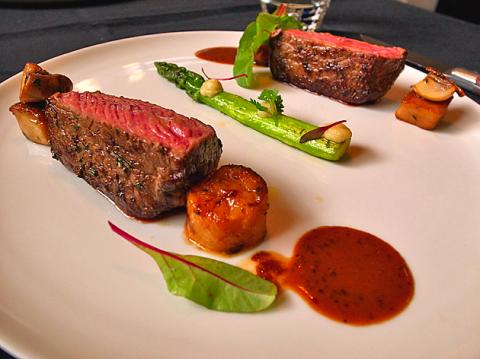
Photo: Ho Yi, Taipei Times
We ordered two set meals priced NT$1,080 and NT$1,280. The basket of warm bread served with balsamic vinegar and fragrant olive oil is worth a special mention. Among the appetizers and soup that followed, the baby squid with salami and anchovy chick pea puree was a palate-titillating treat. Finely seared, the squid tentacles offered a subtle contrast to the tenderly cooked body, whose fresh, light taste struck a nice balance with the savory salami. Though it sounded interesting, the duck consomme with shiitake mushroom and fireweed, however, tasted rather bland.
I didn’t realize the true meaning of its epithet until the tomahawk pork chop with grilled French green beans with apple butter sauce arrived at our table. To my surprise, the gigantic portion of my main course was enough to feed a hungry hunter. After the initial shock, I quickly came to admire that, despite its massiveness, the meat was able to retain its tender texture from the first to last bite.
Setting his expectations high, my dining partner was sadly disappointed with the grilled US prime strip loin steak with fondant potato and Pommery mustard seed sauce. Cooked medium, the steak was more on the tough and chewy side than on the soft and melt-in-your-mouth end.
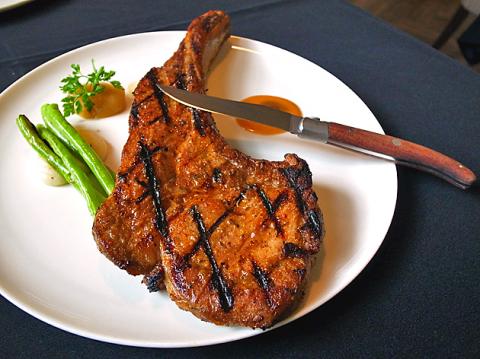
Photo: Ho Yi, Taipei Times
Our disillusion over the steak was dispersed when the desserts were served. While the sweet course is often undistinguished in the city’s many similar establishments, Monsieur L takes its sweets seriously, preparing them in a separate kitchen manned by a pastry chef trained in New York City. The rum sabayon with peanut butter cookie and milk ice cream that my dining partner had was a finely crafted treat for adults, combining, as it did, the delicious scent of rum with the milky and peanut buttery flavors. I was equally impressed by my caramel apple tart with mille-feuille and calvados ice cream, highlighted by the aroma of apple brandy and cinnamon.
In addition to the reasonably priced set meals, Monsieur L offers an a la carte menu for lunch and dinner. The restaurant also changes its menu every two to three months to keep it fresh and attractive.
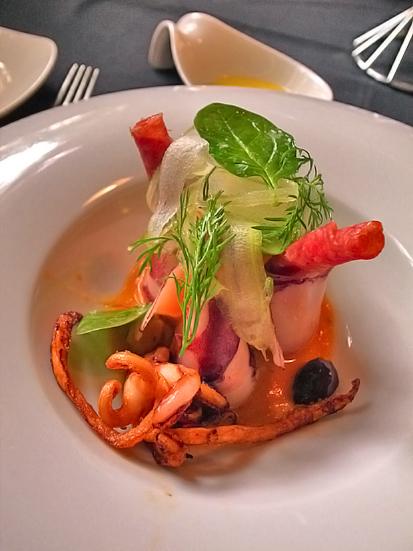
Photo: Ho Yi, Taipei Times
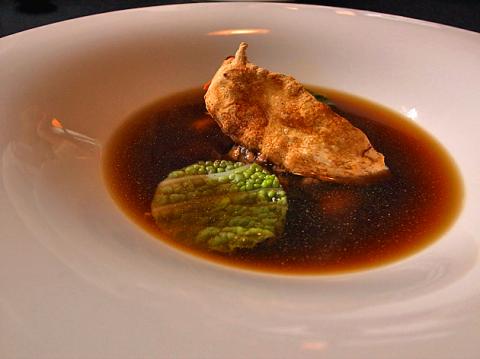
Photo: Ho Yi, Taipei Times
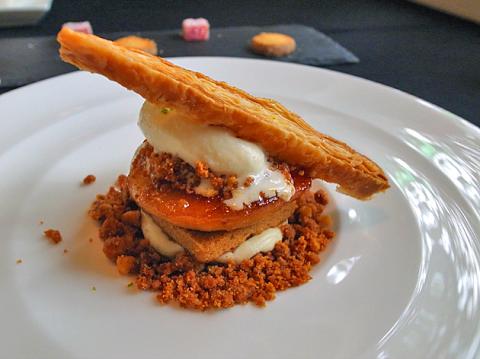
Photo: Ho Yi, Taipei Times

Many people noticed the flood of pro-China propaganda across a number of venues in recent weeks that looks like a coordinated assault on US Taiwan policy. It does look like an effort intended to influence the US before the meeting between US President Donald Trump and Chinese dictator Xi Jinping (習近平) over the weekend. Jennifer Kavanagh’s piece in the New York Times in September appears to be the opening strike of the current campaign. She followed up last week in the Lowy Interpreter, blaming the US for causing the PRC to escalate in the Philippines and Taiwan, saying that as

Nov. 3 to Nov. 9 In 1925, 18-year-old Huang Chin-chuan (黃金川) penned the following words: “When will the day of women’s equal rights arrive, so that my talents won’t drift away in the eastern stream?” These were the closing lines to her poem “Female Student” (女學生), which expressed her unwillingness to be confined to traditional female roles and her desire to study and explore the world. Born to a wealthy family on Nov. 5, 1907, Huang was able to study in Japan — a rare privilege for women in her time — and even made a name for herself in the

Would you eat lab-grown chocolate? I requested a sample from California Cultured, a Sacramento-based company. Its chocolate, not yet commercially available, is made with techniques that have previously been used to synthesize other bioactive products like certain plant-derived pharmaceuticals for commercial sale. A few days later, it arrives. The morsel, barely bigger than a coffee bean, is supposed to be the flavor equivalent of a 70 percent to 80 percent dark chocolate. I tear open its sealed packet and a chocolatey aroma escapes — so far, so good. I pop it in my mouth. Slightly waxy and distinctly bitter, it boasts those bright,

This year’s Miss Universe in Thailand has been marred by ugly drama, with allegations of an insult to a beauty queen’s intellect, a walkout by pageant contestants and a tearful tantrum by the host. More than 120 women from across the world have gathered in Thailand, vying to be crowned Miss Universe in a contest considered one of the “big four” of global beauty pageants. But the runup has been dominated by the off-stage antics of the coiffed contestants and their Thai hosts, escalating into a feminist firestorm drawing the attention of Mexico’s president. On Tuesday, Mexican delegate Fatima Bosch staged a